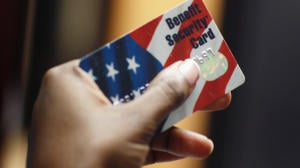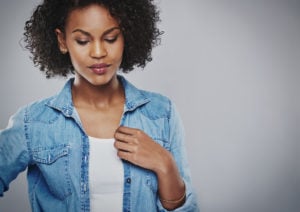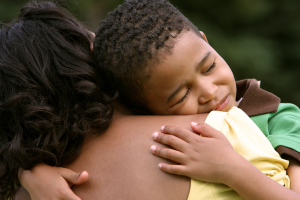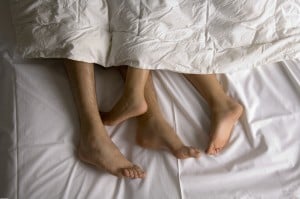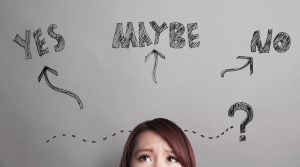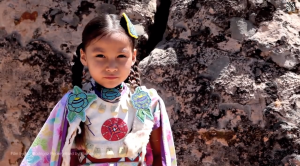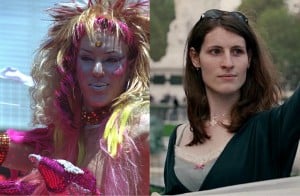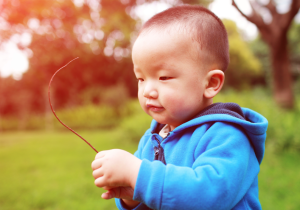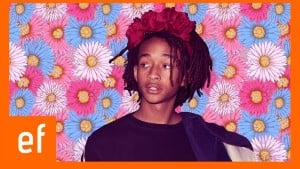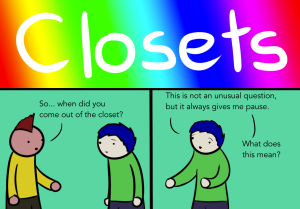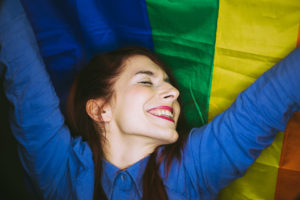
A person smiling with their eyes closed as they hold up a rainbow flag behind them.
I am queer and gender non-conforming, but the LGBTQIA+ movement is not for me.
The LGBTQIA+ movement is not for me because I don’t have the privilege to fight for a singled-issue movement.
I’m Black, low-income, and formerly undocumented. But the mainstream movement has failed at intersectionality, which means addressing the fact that LGBTQIA+ people live at the intersections of multiple oppressions.
My Blackness is visible. My accent marks me a foreigner. And my gender presentation makes me a target of violence in a world where femininity is devalued and to be destroyed.
The LGBTQIA+ movement has failed at being an intersectional movement because I don’t feel safe entering spaces that market themselves as “LGBT-friendly.”
Not when just three weeks ago, a White man at an “LGBT mixer” approached me and told me I would be more attractive if I wasn’t wearing a head wrap. The LGBTQIA+ movement isn’t for me when I can’t even afford entrance fees to community events that bring “emerging leaders” to my neighborhood.
An LGBTQIA+ movement that centers intersectionality wouldn’t be letting these problems go by as the norm. If you’re part of an LGBTQIA+ organization, it’s sometimes hard to criticize our own work – because after all, not all of society is committed to our liberation.
However, if you notice that your work for LGBTQIA+ liberation isn’t intersectional, you have to do something about it.
Because if one single person in our community is oppressed, we will never reach liberation.
To be more concrete, I want to share five particular ways in which the LGBTQIA+ movement has failed at intersectionality.
1. Marching for Gay Pride, But Not for Black Lives Matter
Do you march at Pride, but not for Black Lives Matter? If so, you’re not alone: Many people do the same. However, this might be a good time to reflect on how that happens, and why it needs to change.
The mainstream LGBTQIA+ movement isn’t for me as a Black individual because my number one concern is to make it through every day alive – a concern many who live at the intersections of being Black and LGBTQIA+ have.
Living at the intersections of queerness and Blackness, I have seen the ugly ways in which a predominantly white and male LGBTQIA+ movement has erased the leadership of transgender women of color.
When I attend Pride events, seldom do I see tributes made to Marsha P. Johnson (trans Black woman) and Sylvia Rivera (Latinx trans woman) who rioted at the Stonewall Inn and gave us Pride.
As a Black queer, when I march at Pride, I march because Marsha and Sylvia gifted us a revolution. But the truth is that not everyone in the LGBTQIA+ movement marches for this reason.
LGBTQIA+ Pride has become a corporate event, where the same corporations that imprison us (primarily Black, Indigenous, and of color trans and non-binary folk) are the organizations sponsoring our marches.
Liberation will require divestment from institutions that target us.
For example, let’s say you go to a restaurant and you’re mistreated on the basis of your gender, race, or age. You wouldn’t be very happy. So in order for you to feel liberated, you might make the decision to not go there again.
Divesting from institutions that oppress us isn’t easy.
For example, GetEqual recently led a campaign tittle #PrisonsOutofPride, where they encouraged people to “divest from Wells Fargo and the company’s unapologetic support for mass incarceration by returning Wells Fargo’s sponsorship money and removing Wells Fargo as a current or future sponsor of Capital Pride.”
It can be hard to get all LGBTQIA+ people moving their money elsewhere. However, liberation takes hard work and a community commitment to help each other.
The reality of living at the intersections of Blackness and queerness is that I’ve seen the ways in which the LGBTQIA+ movement has failed my Black community.
While LGBTQIA+ people have no problem marching at those corporate-sponsored Pride events, these very same people avoid marching at Black Lives Matter events. Despite the leadership of Black Lives Matter being predominantly LGBTQIA+, the mainstream LGBTQIA+ movement has failed to show up and act in solidarity, because the movement lacks an analysis on race.
I’m not white. I can’t separate my Blackness from my queerness. I can’t separate the fact that at any moment, I may be killed in the street not only because my queerness is evident, but also because as a Black body, I’m always deemed a threat to society.
If the LGBTQIA+ movement wants to be intersectional, it must march alongside Black Lives Matter, because Black Lives Matter is a queer movement. When we march for Black Lives, we are marching for Black LGBTQIA+ people.
2. Asking for Marriage Equality, But Not for an End to Prisons
While writing this piece, I had to go back to a Facebook status that I posted in March of 2013, where I wrote, “Gay marriage will not change the incarceration rates of the queer community. It will not stop racial profiling of queer people of color. It will not stop the high suicide rates of our communities and the lack of medical care of our communities.”
Immediately, my status caused chaos in my circle of LGBTQIA+ friends, leading me to realize that some of the people I was fighting alongside weren’t interested in fighting within an intersectional perspective that considered race, class, and gender in their analysis of LGBTQIA+ issues.
Many of my Facebook friends – primarily those who are white – decided to send me message after message about how “angry” I came off online, and how I was missing the fact that people “fought” for me to be able to get married.
Marriage equality didn’t stop the police from stopping me and frisking me as I walked out of the metro in New York City that year.
What the LGBTQIA+ movement has missed is the fact that we’re oppressed because we (LGBTQIA+ people) have always been perceived as criminals. Marriage equality doesn’t de-criminalize our bodies.
Just this February, the Center for American Progress and the Movement Advancement Project authored a report titled, “Unjust: How the Broken Criminal Justice System Fails LGBT People.”
In the report, they found that in the US, approximately 3.8% of adults identify as LGBT(QIA+), but 7.9% of adults in prison are LGBT(QIA+), and 7.1% of those in jail are also LGBT(QIA+). Even more, 20% of youth in juvenile detention are LGBT(QIA+)-identifying.
This means that our community is being incarcerated at massive rates. LGBTQIA+ adults and youth are two times more likely to be imprisoned according to the report.
We need to push for policies that de-criminalize LGBTQIA+ individuals.
To do so, the LGBTQIA+ movement needs to work with organizations and movements who are already addressing anti-Blackness and racism within the criminal justice system, as well as those who are working to protect the rights of sex workers, homeless folk, those who are undocumented, poor, and of religious minorities, just to name a few.
3. Encouraging People to Come Out, But Not Keeping Safety in Mind
Are you currently out as LGBTQIA+? I am, too – and I’ve been very lucky to have the support of some of my family members, and you may have been as well. However, I encourage you not to forget that there are also other realities we may not understand.
Coming out is not for everyone. Sometimes, coming out as part of the LGBTQIA+ community can put us in physical, emotional, and spiritual harm.
There are some people that grow up in households where being part of the LGBTQIA+ community may mean exile. There are youth who sometimes choose not to come out in order to survive with a roof over their head, clothes, and food.
The idea that everyone has to come out to be liberated is problematic because it relies on an understanding that all LGBTQIA+ people will find a community that will uplift and celebrate them.
There are people who don’t come out to their families as a form of resilience.
For example, I have undocumented friends who have chosen not to come out as LGBTQIA+. Because being undocumented is already dangerous enough, and sometimes, not coming out is a way to resist and survive.
For them, not coming out doesn’t mean hiding – it means survival, resistance, and revolutionary action.
Adrian Ballou wrote a great article titled, “It’s Not all Glitter and Rainbows: 6 Harmful Myths About Coming Out” where they explain that coming out “varies depending on what other privileges and oppressions” the person lives with, because “the more types of oppression you face, the more exponentially dangerous and difficult it can be to come out.”
In order to understand that not coming out is a form of resistance, the LGBTQIA+ movement needs to develop a more nuanced analysis that considers the ways in which people who may be in rural areas, poor, undocumented, or part of a conservative religious community may chose to protect themselves from violence by not coming out.
This doesn’t mean that they’re dishonest. It means the opposite: They’re honest with choosing what’s best for them at that moment.
To deepen your understanding beyond the common framework of coming out, you can read more resources here and here.
4. Telling LGBTQIA+ People That It’ll ‘Get Better,’ But Not Considering Structural Violence
In 2010, Dan Savage found the It Gets Better Campaign through a video he released on YouTube with his partner Terry Miller. The campaign, which still exists, is an attempt to send a message of hope to youth who are part of the LGBTQIA+ community and may be facing discrimination or bullying based on their identity as LGBTQIA+.
You might not see anything wrong with this campaign – what could be wrong with giving kids some hope?
Well, while the intention is one that rose out of struggle, the execution of the campaign is poor. It’s not intersectional.
Because the campaign doesn’t address class, race, or gender, it fails to name that LGBTQIA+ communities are actually oppressed by structural issues, and not just bullies in high school.
The campaign is actually hurting the LGBTQIA+ community because it’s led by people who are of middle class status and predominantly white, and who fail to realize that poor, Black, Indigenous, and of color LGBTQIA+ individuals are oppressed by more than one identity.
When I first came out, I was living in Massachusetts, and all my straight “progressive” friends would tell me that I was lucky to be living in Boston because it wouldn’t be as hard for me. However, when I came out as queer, my primary concern was that I was living undocumented and could be deported at any minute, especially now that I was out as queer.
My friends didn’t understand that my LGBTQIA+ identity was just one factor of the way in which I navigate the world.
The reason for this is that popular rhetoric like “It Gets Better” tells a privileged narrative that doesn’t reflect the lived experiences of those of us who embody marginalized identities.
As I stare at a screen of two white gay men – who also happen to be cisgender, US citizens, and upper class – telling me that things will “get better” concerns me. Because the truth is that the message doesn’t address the concerns of my community.
5. Fighting for Inclusive Bathroom Bills, But Not For Federal Protection of Trans People
Earlier this year, Delia Melody wrote a piece titled “The Crucial Problem We’re Forgetting in the Trans Bathroom Debate,” where she explains that she’s “tired of hearing about and talking about bathroom bills.”
Because the problem isn’t that there is un-safety in using bathrooms, but that the agenda of anti-trans bills is to eradicate trans and non-binary communities.
Furthermore, Melody explains that “[f]or a very long time we’ve wanted to act like we’re protecting women by gendering spaces, but all we’re really doing is enabling the misogyny to continue everywhere outside of those spaces.”
In order to avoid this, we need to address patriarchy, gendered violence, and a culture that devalues femininity.
Fighting for inclusive bathrooms isn’t a “wrong” thing to do, but it simply isn’t enough, especially when transgender women of color are dying at massive rates.
We need federal protection of trans and non-binary people, which will mean changing culture. We need to uplift the voices of trans and non-binary people, especially those who are Black, Indigenous, and of color.
We also need to see trans and non-binary people in positions of leadership – because they’re the ones who can best show us what liberation truly looks like for our communities.
***
If you’re LGBTQIA+, I need you to know that it’s not too late to begin to push for a more inclusive movement. If at all, we need to understand that there is not just “one” movement for us to exist in.
We have been existing as part of multiple movements.
I invite all of you to reflect on the ways in which race, class, gender, immigration status, and religion affect our communities. In reflecting, I’d like for you to make a commitment.
Maybe your commitment is to center the voices of LGBTQIA+ community members who are not white and not male. Perhaps your commitment will be to march at the next protest that is not necessarily an LGBTQIA+ protest. Or what you can do is simply share this article.
To be liberated, we need to work together. We need to analyze, critique, and provide ways to move forward.
We can’t just critique each other and move on. I leave you these words as a way to start a conversation, because the reality is that I’m tired of feeling that the LGBTQIA+ movement isn’t for me. It should be for all of us.
[do_widget id=’text-101′]
Alan Pelaez Lopez is a Contributing Writer for Everyday Feminism and an Afro-Indigenous migrant that grew up in Boston via La Ciudad de México, documenting their existence as an (un)docuqueer poet, jewelry designer, and a huge Frida Kahlo fan. Alan is currently in graduate school pursuing a degree in Comparative Ethnic Studies in the Bay Area, and a member of Familia: Trans, Queer Liberation Movement.
Search our 3000+ articles!
Read our articles about:
Our online racial justice training
Used by hundreds of universities, non-profits, and businesses.
Click to learn more





